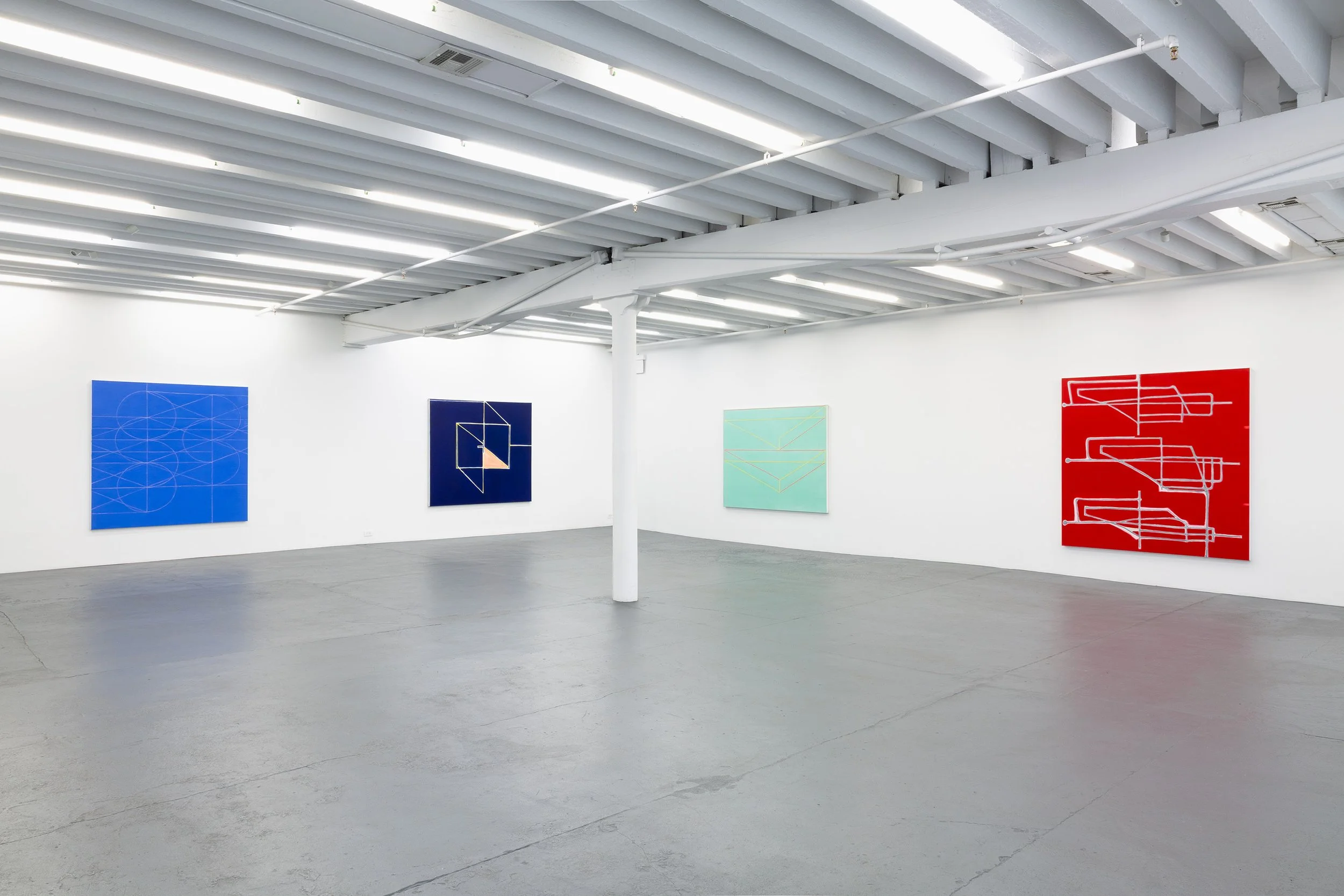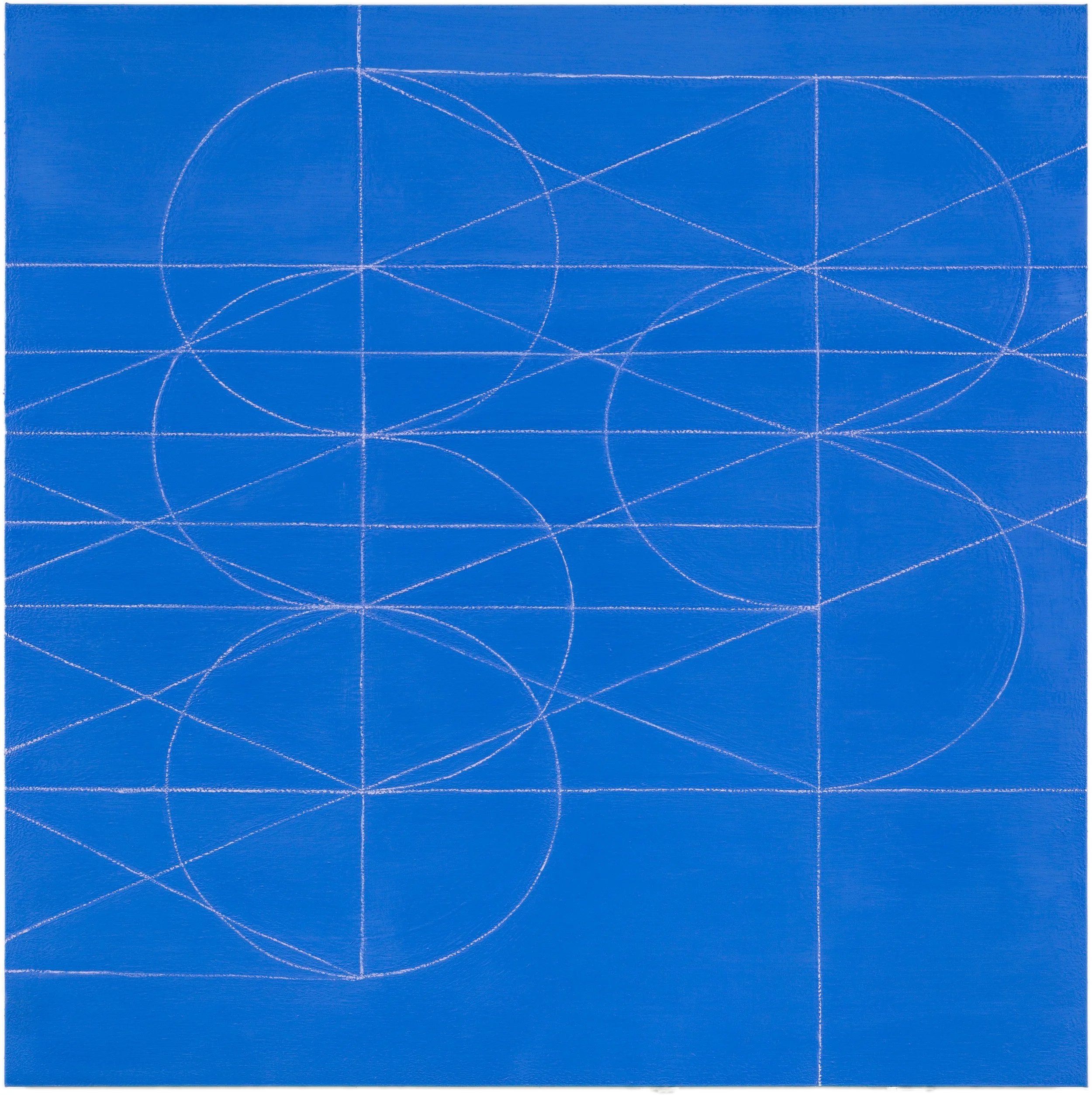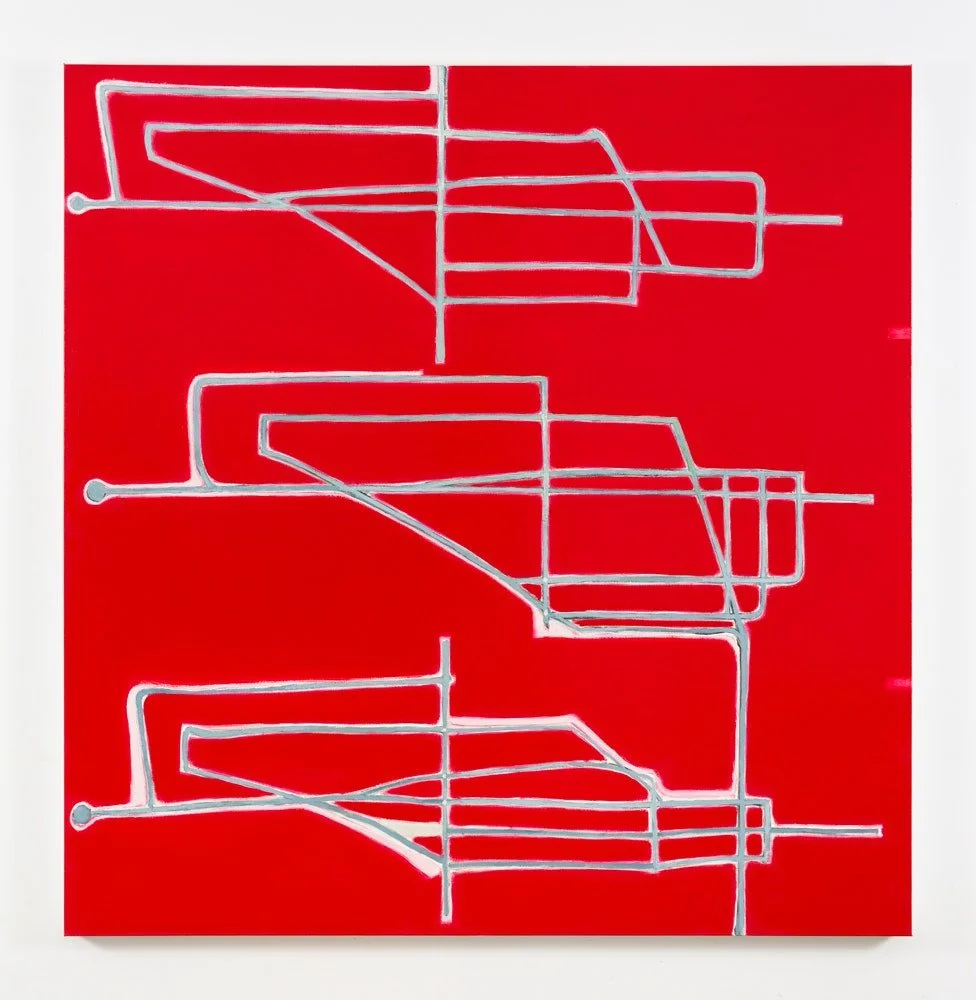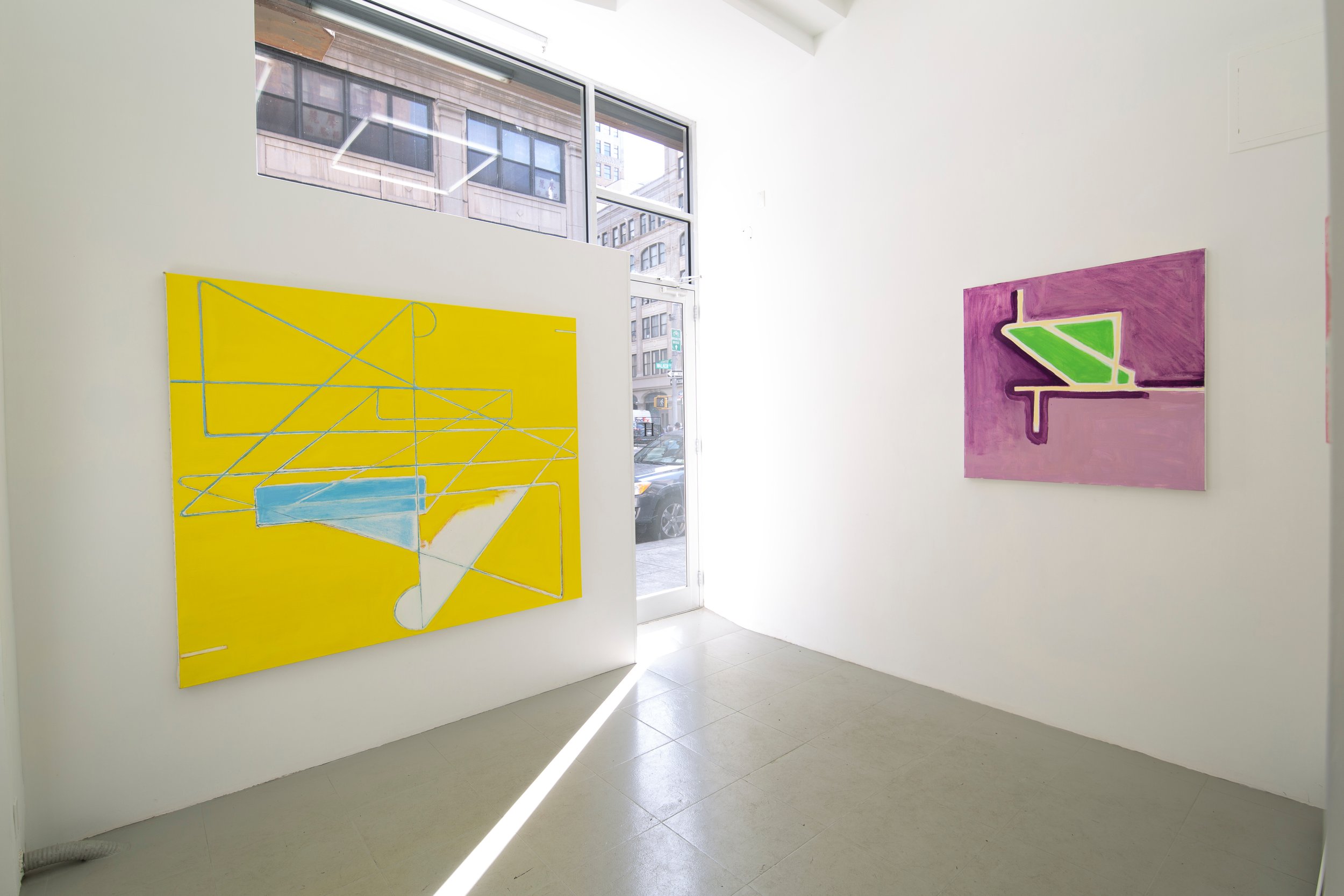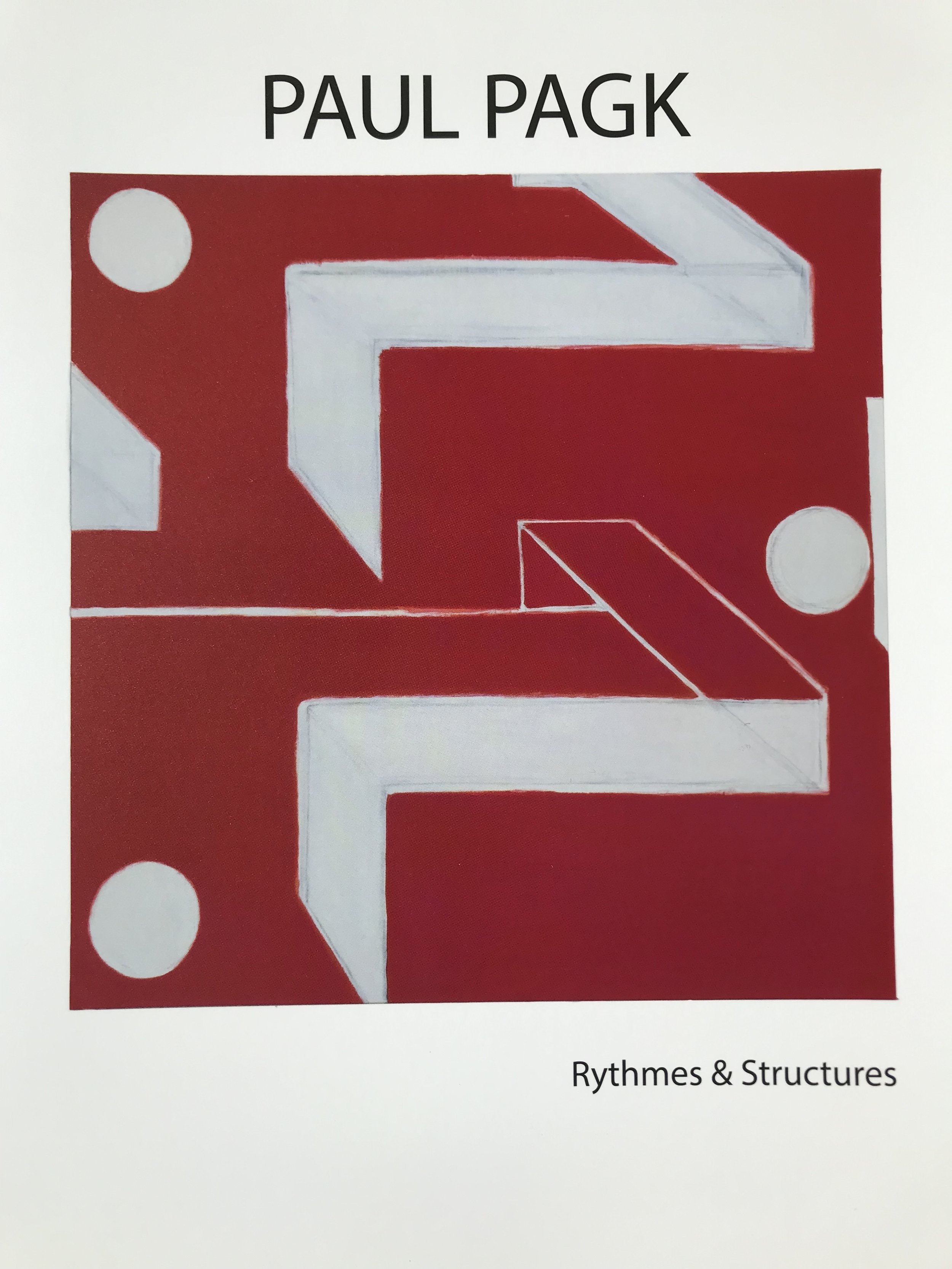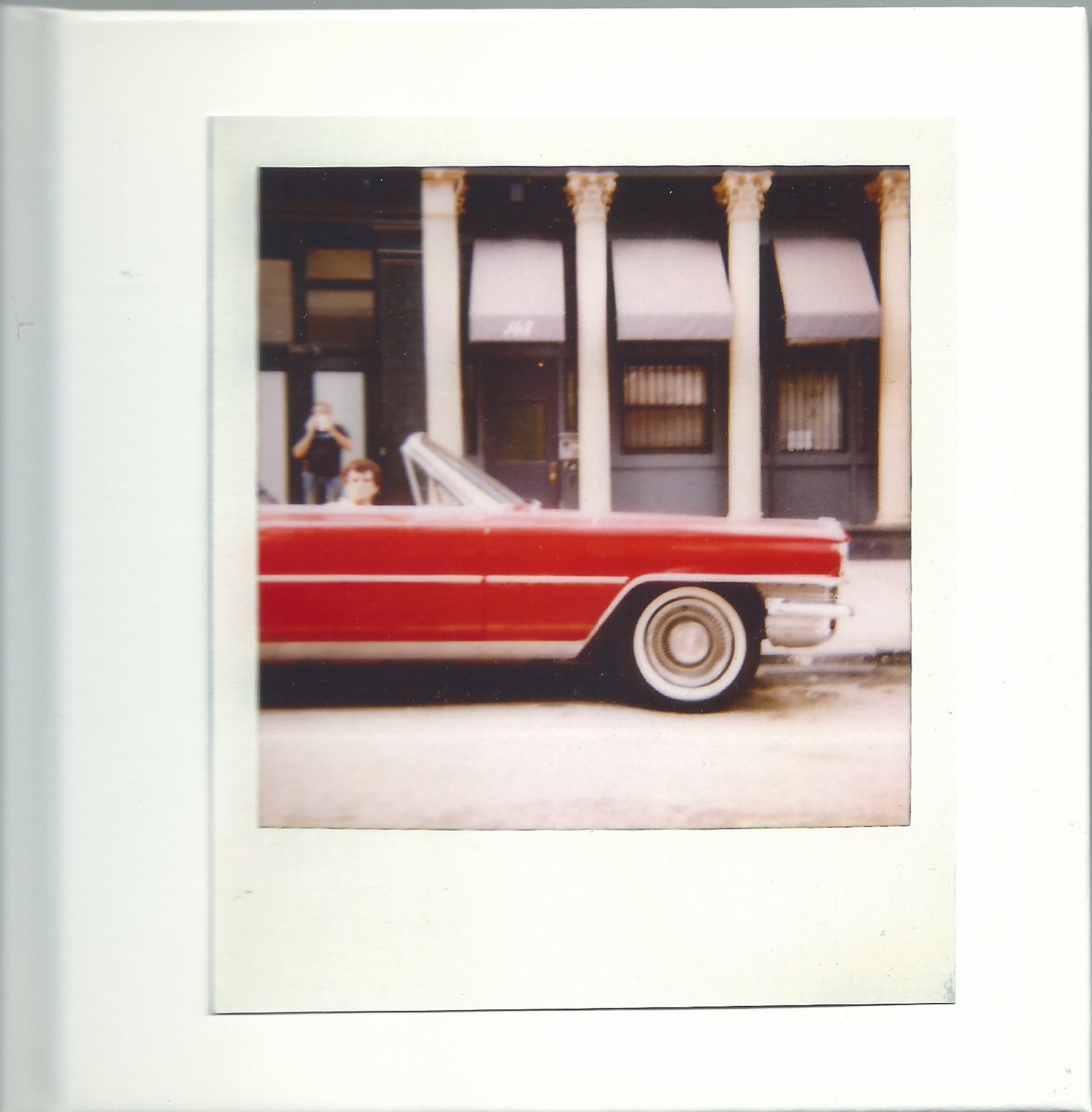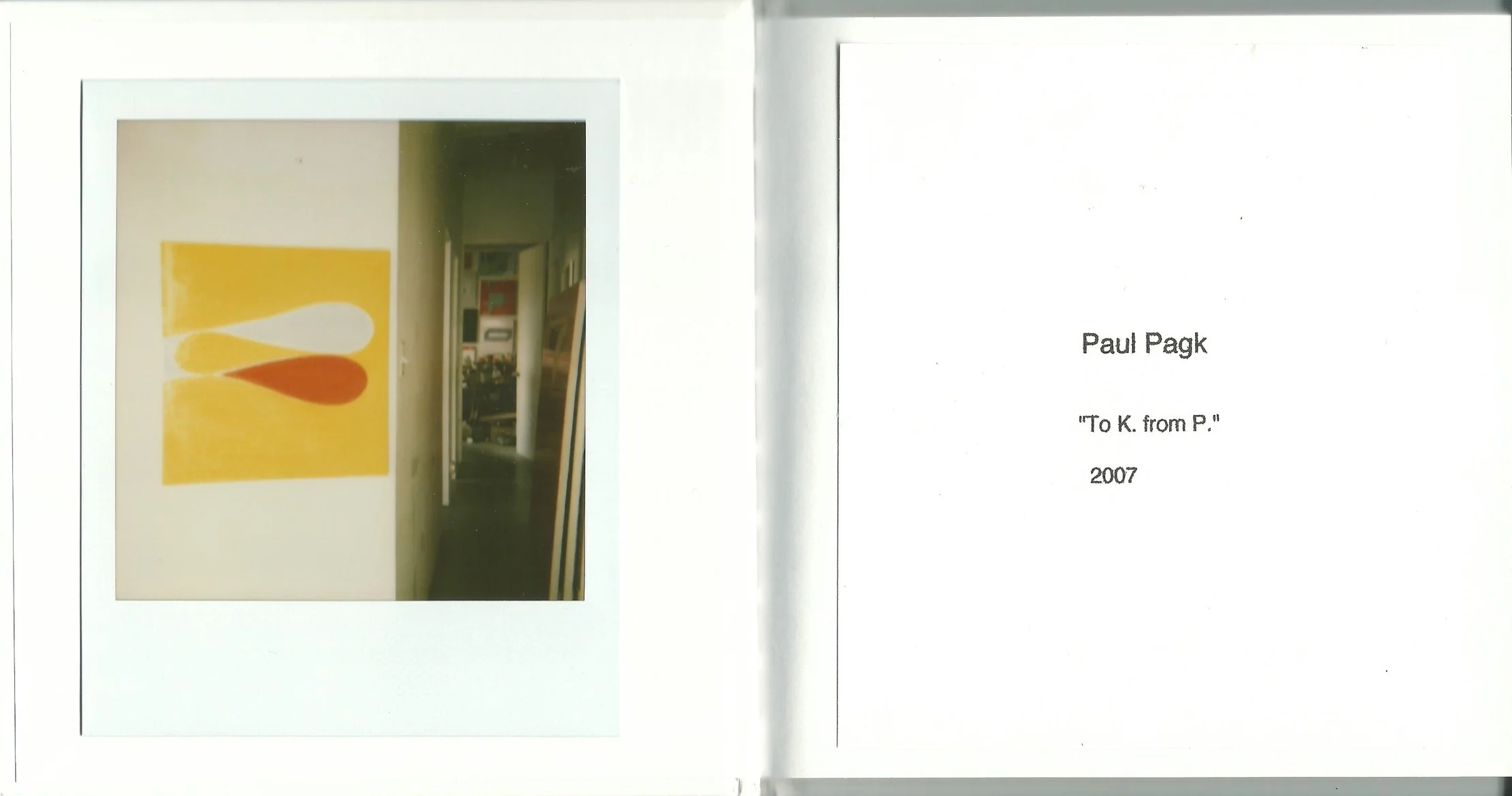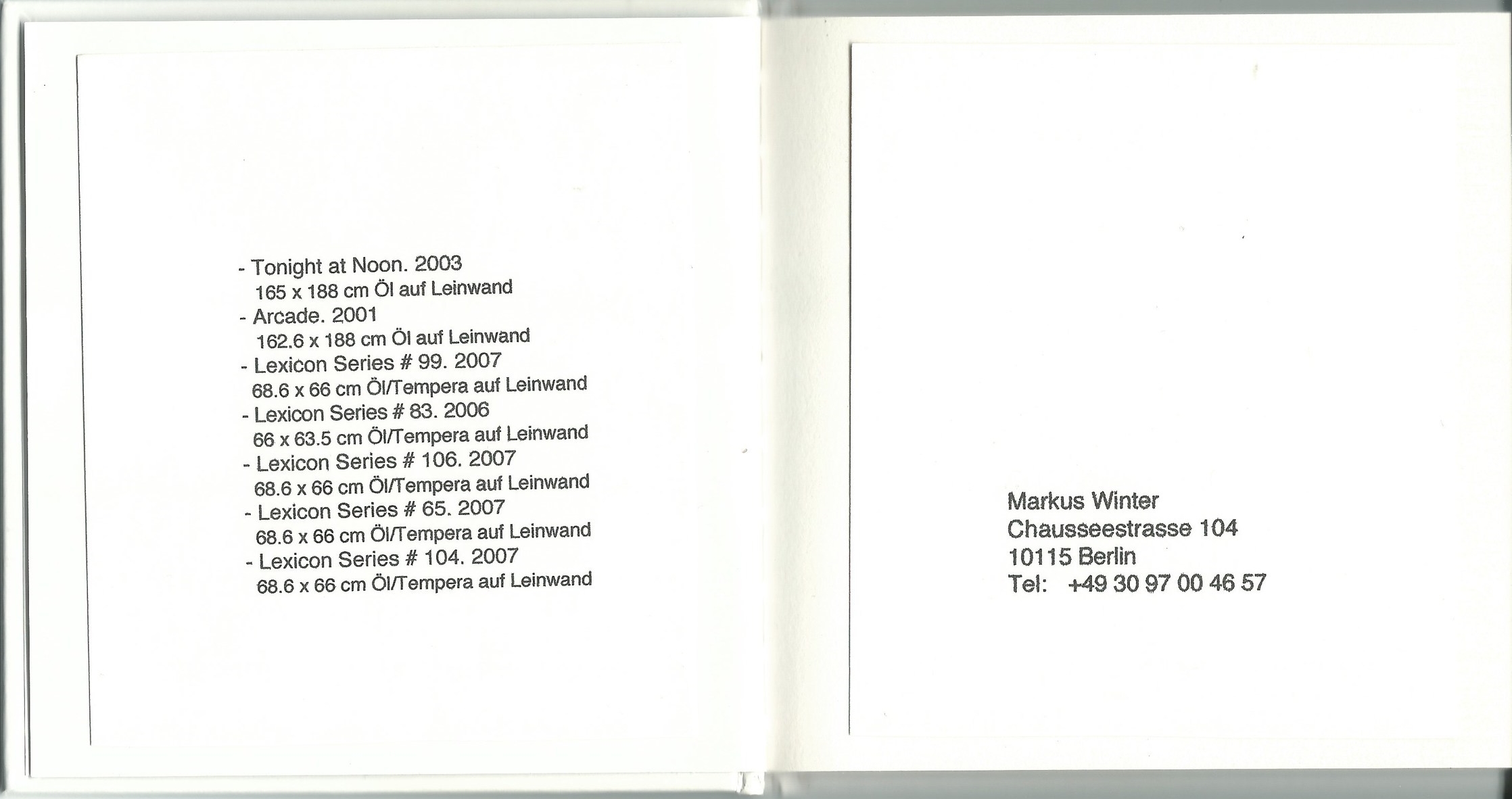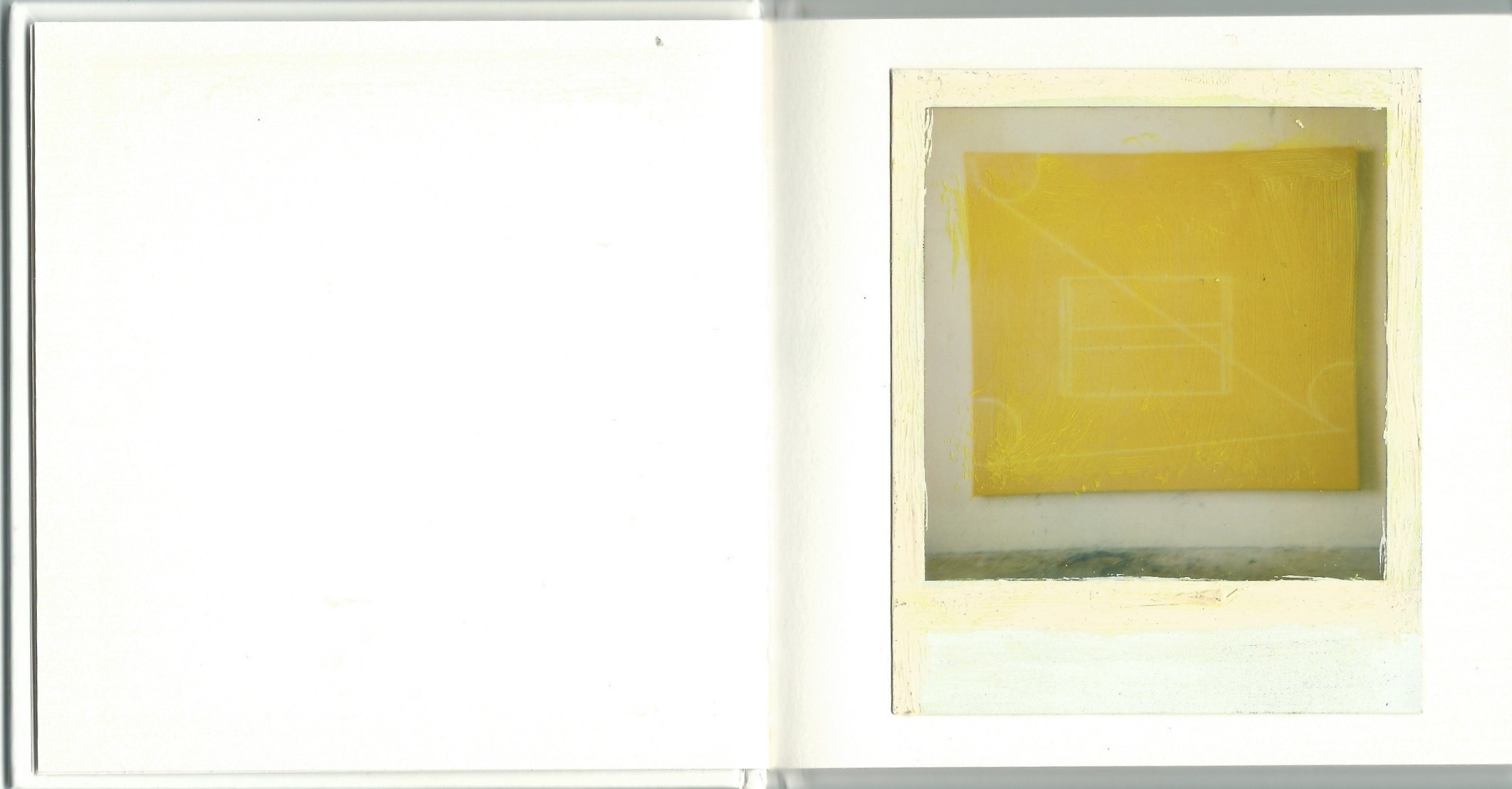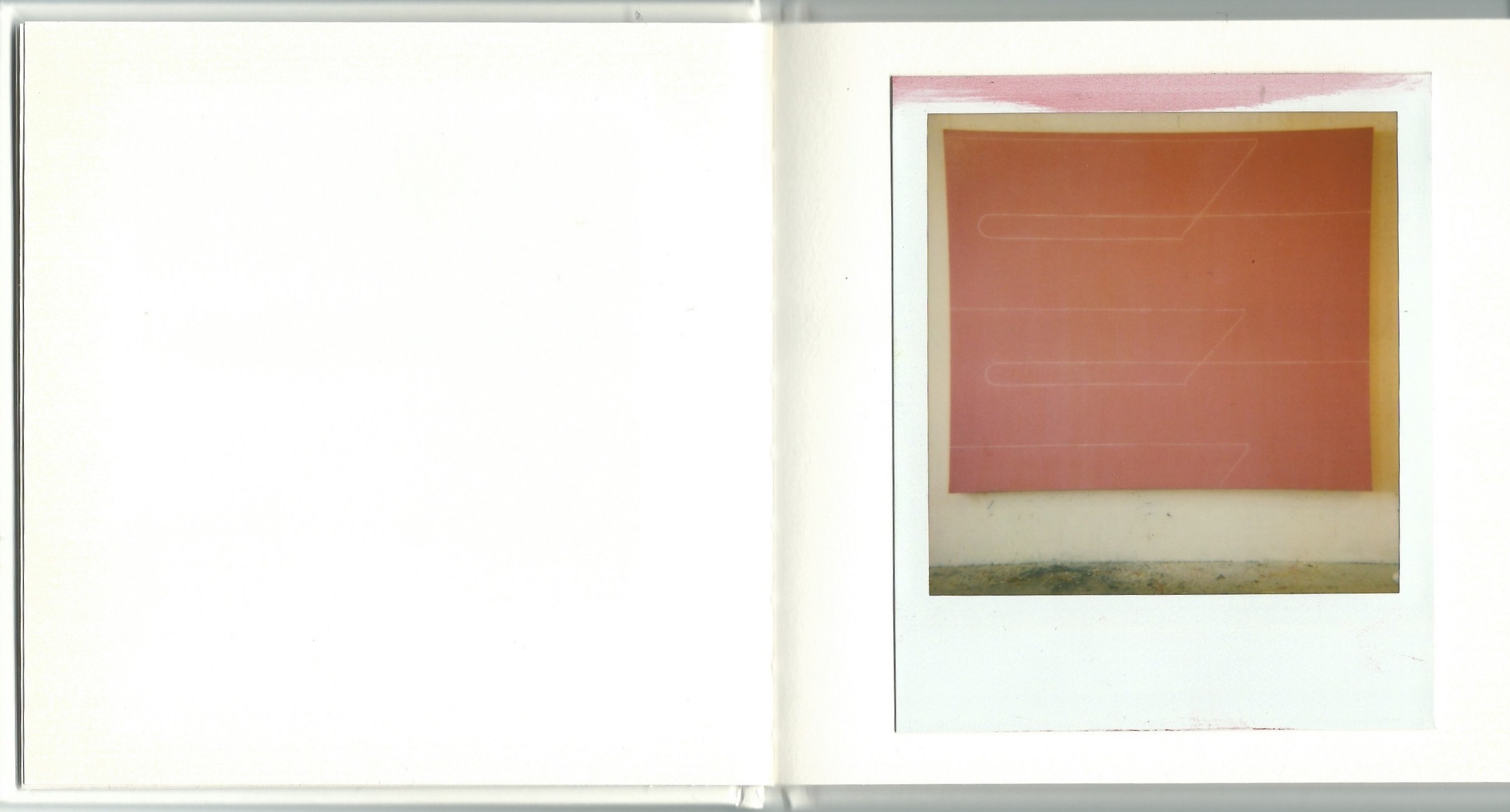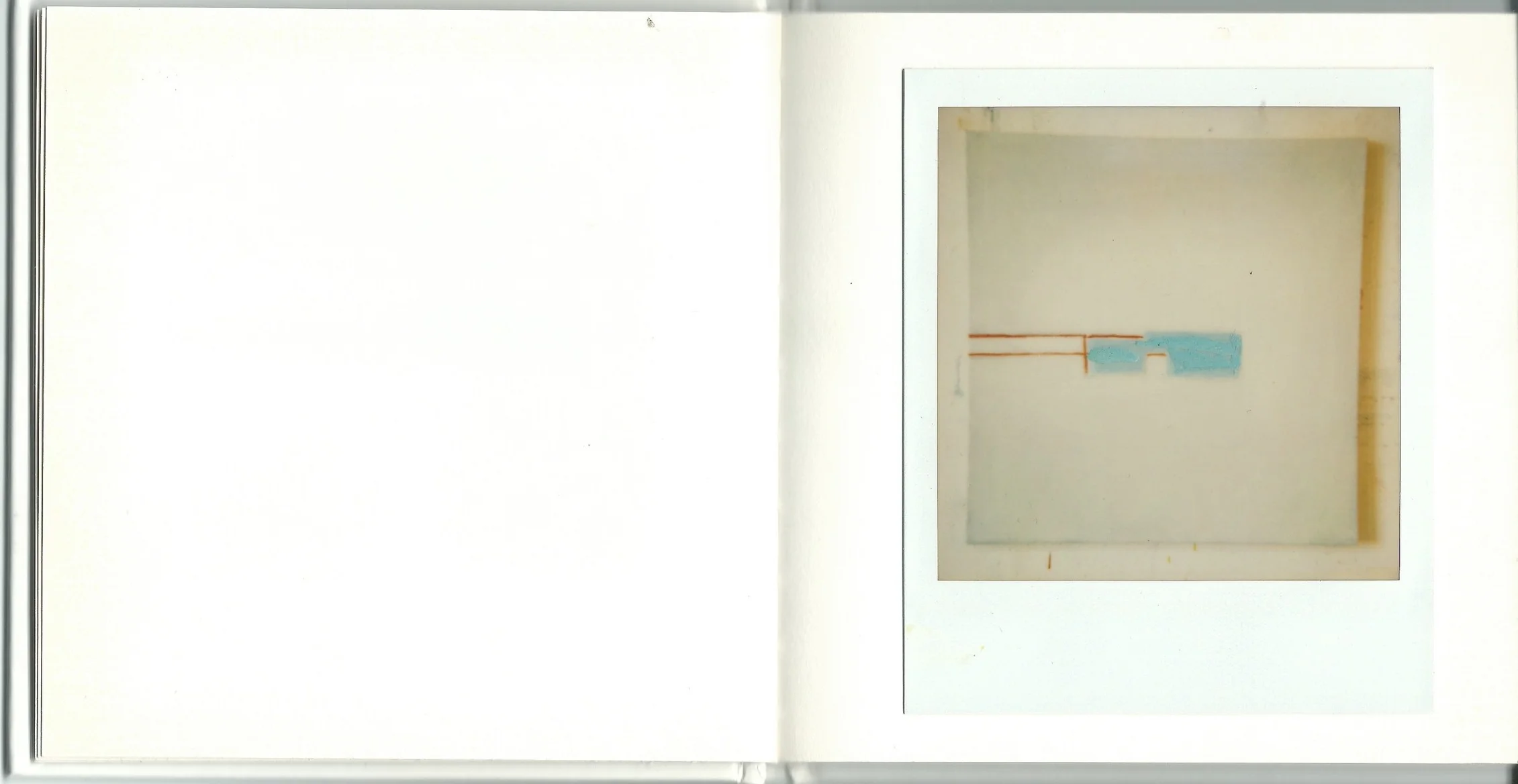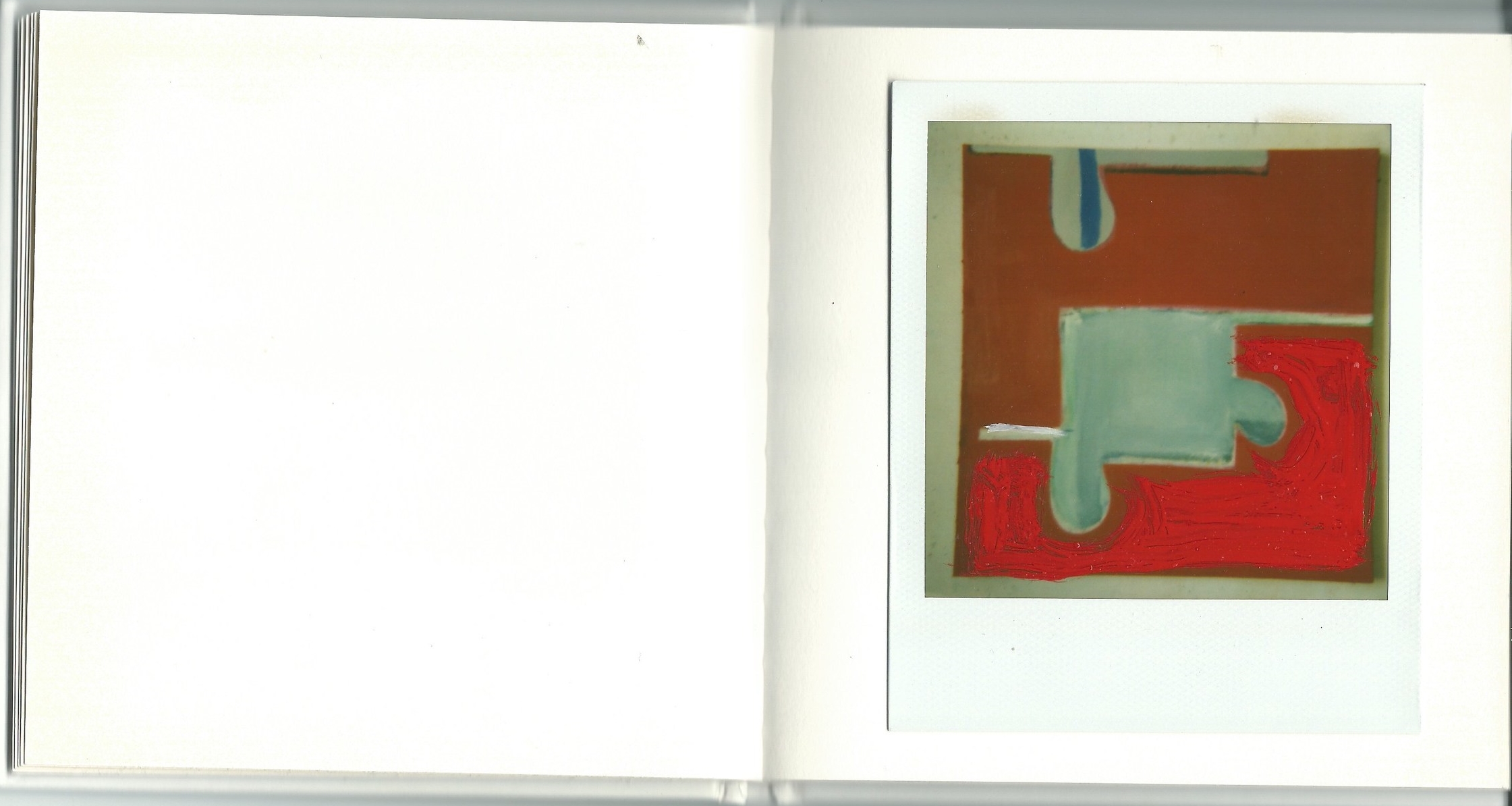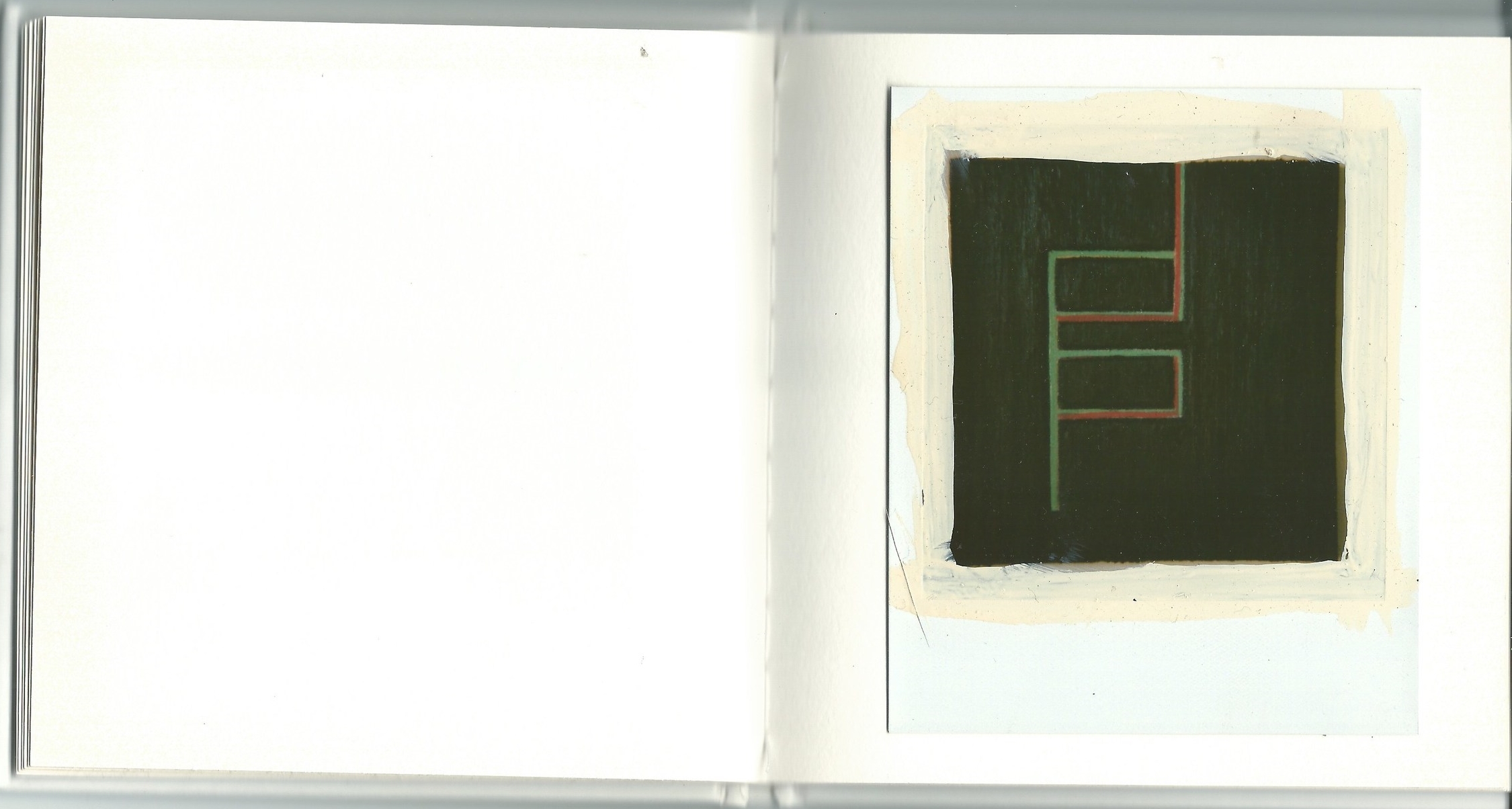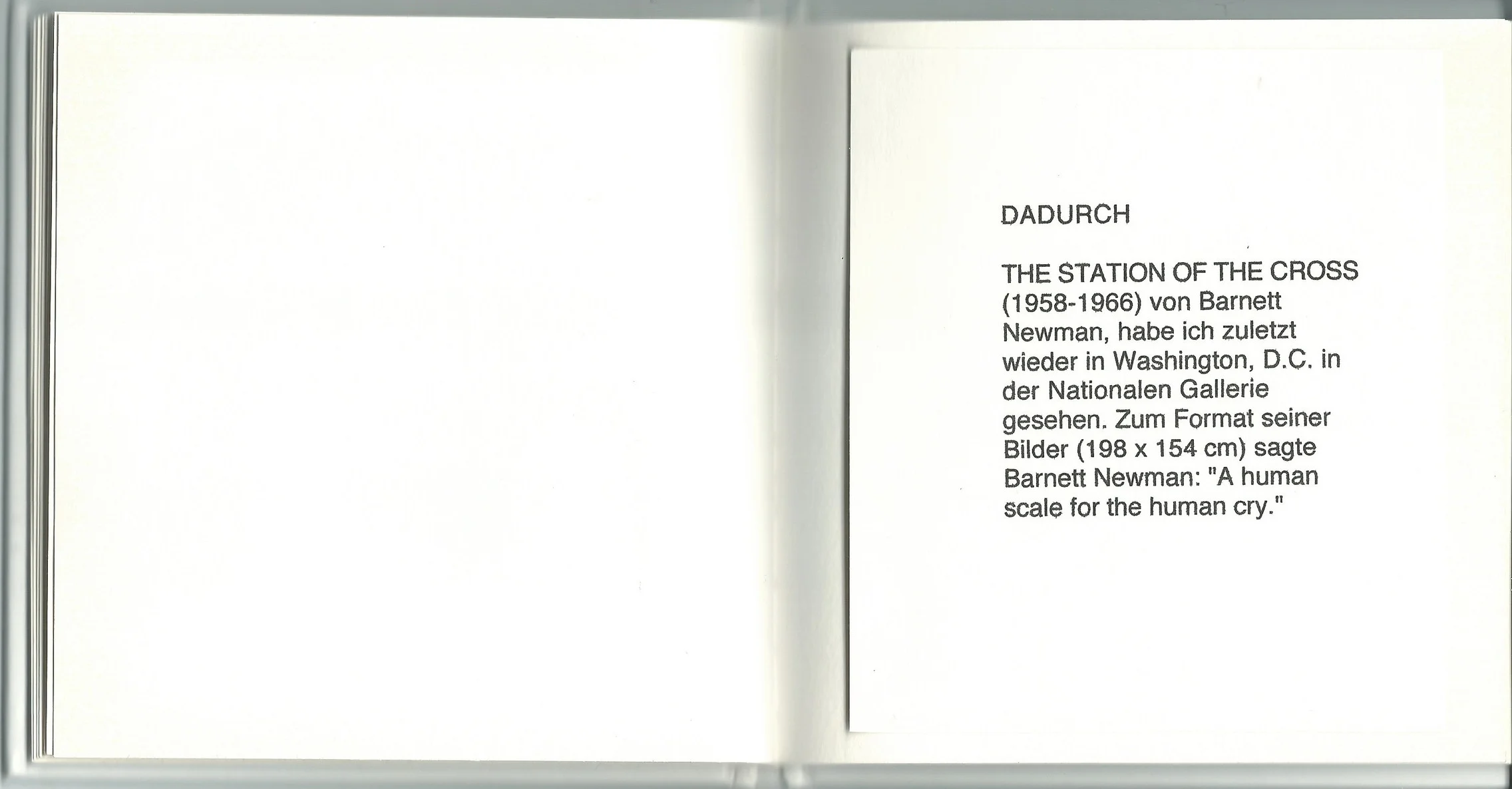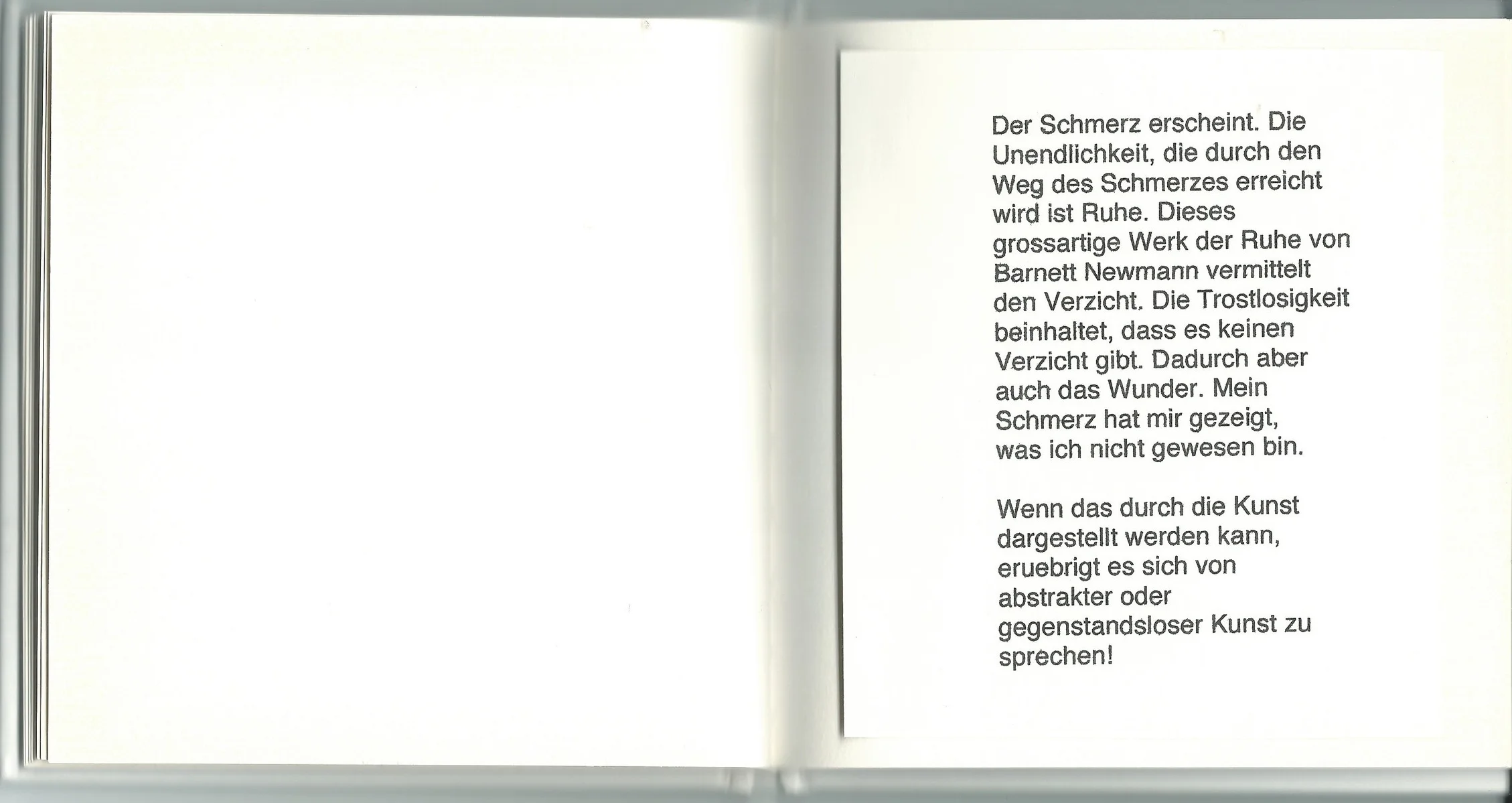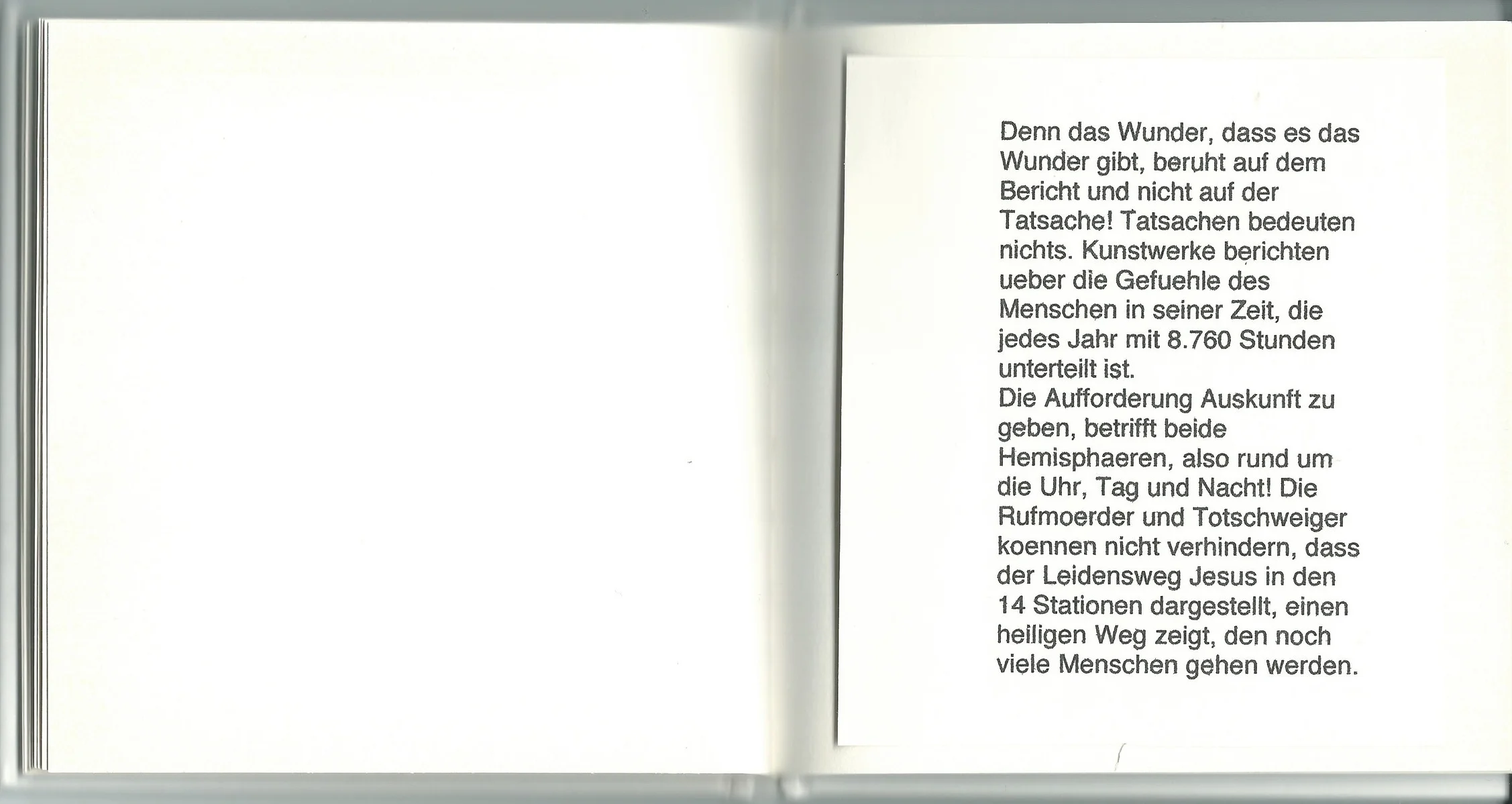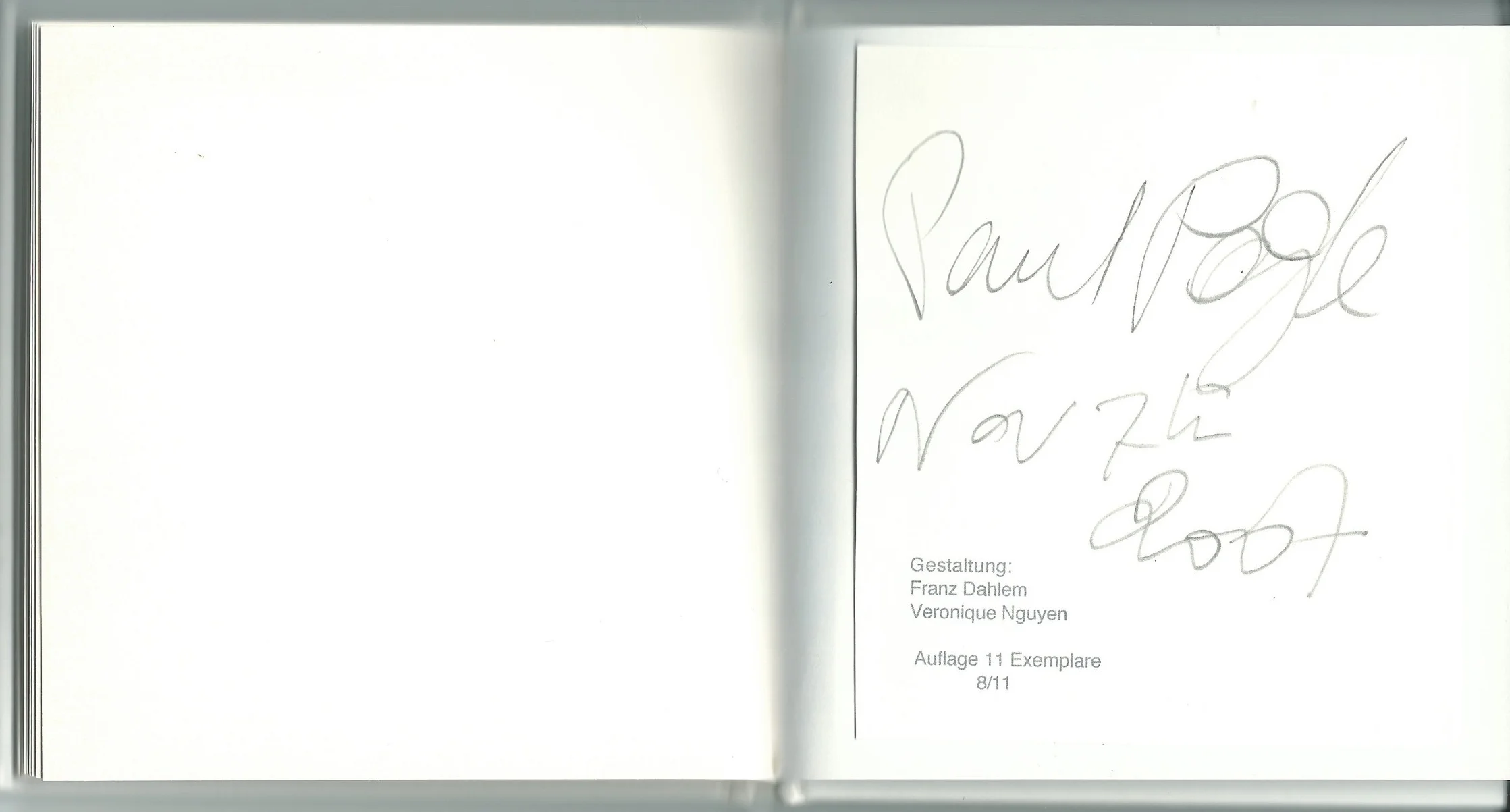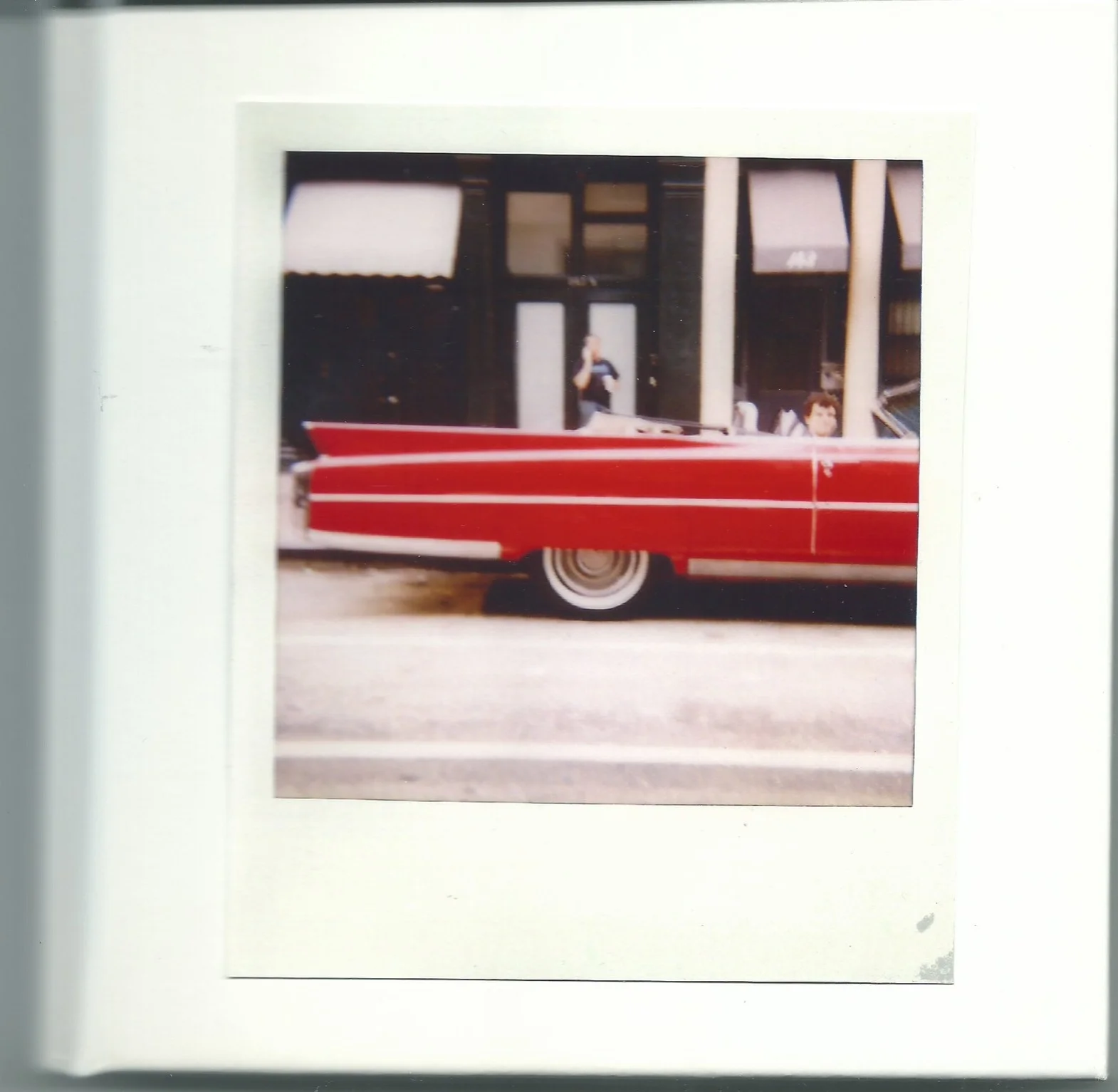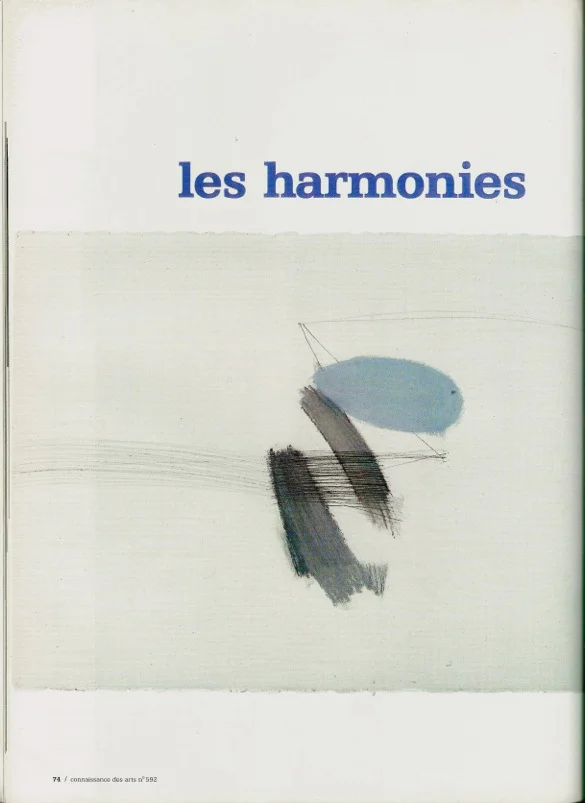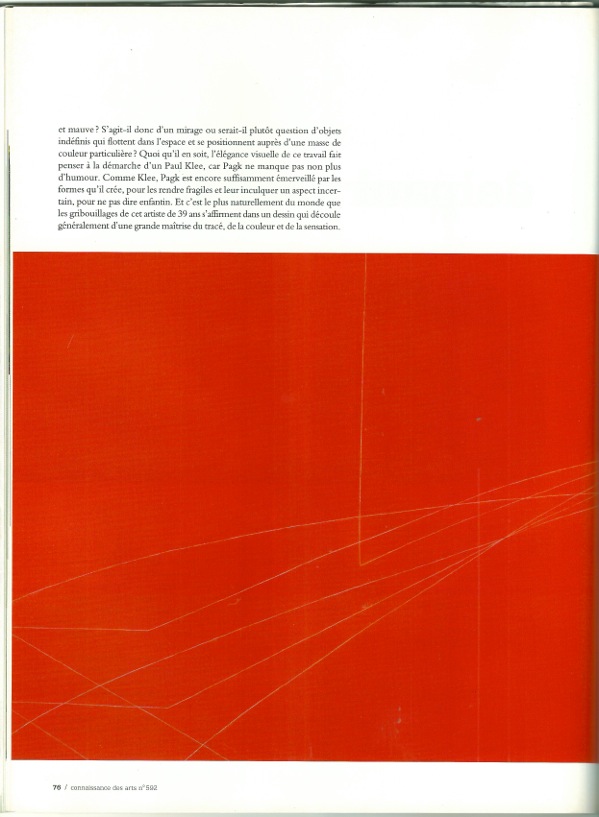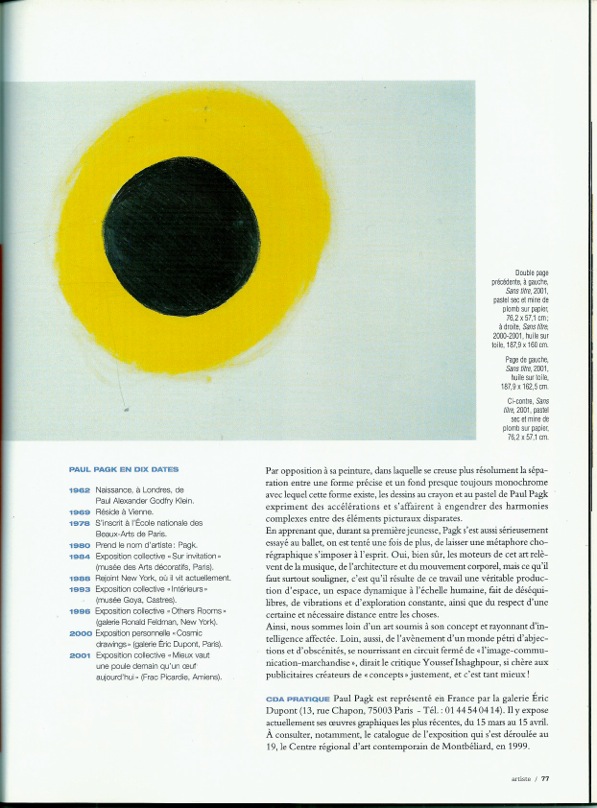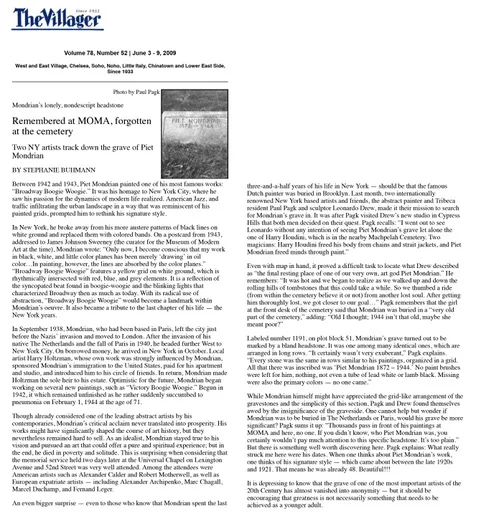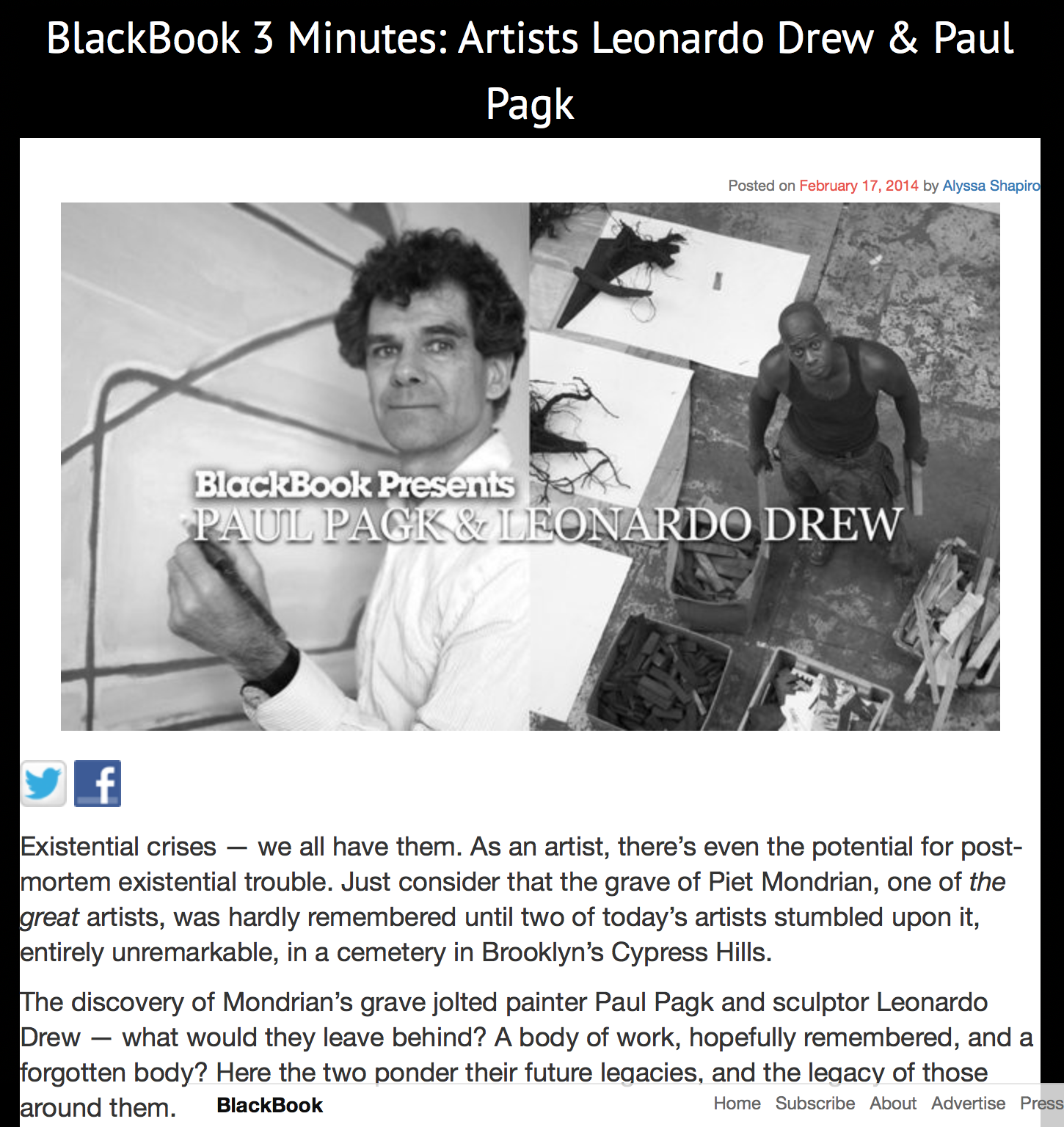Selected Reviews & Publications:
. Artforum, April 2024: THE EXPANSE - A reflection on the art of Mark Rothko by Paul Pagk (Click)
Review “Paul Pagk @ Miguel Agreu Gallery”
by Emireth Herrera Valdés, The Brooklyn Rail
February 2023
Catalogue PAUL PAGK -Peintures et Dessins 2008-2021
Centre d’Arts Plastiques, Royan (France)
Texts by Jean-Pascal Léger and Todd Alden
James Bishop - Transatlantique (click)
Eight artists brought together by Molly Warnock, among the many on both sides of the Atlantic who have been profoundly marked by the work as rare as it is decisive of James Bishop (1927-2021), share their perspectives on the American painter. Published in September 2021 (English / French)
PAUL PAGK - Interaction
text Labyrinths of Perception by Meriam Korichi
Two Coats of Paint, Stephen Maine (2019): “The Abstract Zeigeist in Storrs”, A review of group exhibition CONSTRUCTED (Click here for full review)
Excerpt from Stephen Maine’s review: “On view at the University of Connecticut’s Contemporary Art Galleries through November 29 is “Constructed,” a lively exhibition of seventeen works by Five distinguished midcareer painters whose handling of color—as a kind of visual armature—is inseparable from structure. The show’s curator, Museum Director Barry Rosenberg, calls on Beverly Fishman, Marilyn Lerner, Paul Pagk, Joanna Pousette-Dart and Cary Smith for evidence that, in a rising challenge to the current fashion for Figurative painting, “a counterrevolution featuring new tactics of abstraction is bubbling to the surface.”….
….A scaffolding of thin, slate-blue lines suggesting flattened cages or fire escapes or a game board gone slightly haywire subdivides the uniform, pale pink ground of Paul Pagk’s imposing La vie en rose/in the flesh. Fine-tuned horizontals, verticals, diagonals and semicircles compartmentalize the canvas, yielding scores of contiguous zones or territories. Subtle though it is, a nonconforming stripe is the main event. This daring brushstroke—in a pink barely paler than the ground—breaks free, races across the painting, hangs a hard right and angles downward toward an eccentric teardrop shape dangling like a carrot.
Two exquisite drawings suggest the origins of Pagk’s board game/cage images (there is a second painting, equally commanding) might be in an exploration of linear perspective and/or axonometric drawings. The inclusion of these small framed works varies the visual rhythm of the installation, which includes primarily mid-size paintings....”
Le Figaroscope, Sophie de Santis (2019): Paul Pagk, Galerie Eric Dupont, Paris; La couleur musicale des toiles mathématiques de Paul Pagk
The Musical Color of Paul Pagk (translated): "One plunges into Paul Pagk’s abstract paintings as though into a freshwater pool. The radiance of pure pigments - turquoise green, sunshine yellow, vermillion red, all hand-ground by the artist in oil - brings depth to his large scale paintings. The gaze wanders, lost in delight; barely distracted by freehand-drawn lines that seem to follow some mathematical formula. Paul Pagk insists that there is none: everything is intuitive, never pre-planned. He might rather be influenced by the dancing notes of jazz, even paying tribute to the Duke with staves of music dancing across the painterly space. One could also identify microprocessor circuits or even drawings of imaginary architecture. Influenced by masters of abstraction (from Mondrian to Ellsworth Kelly), the New York-based 57-year-old Paul Pagk knows the music. Like in a choral composition, his monochromes echo in complete harmony.”
Paul Pagk, Interaction: ebook en français - Les labyrinthes de la perception de Meriam Korichi (cliquer ici)
Artnet Editors’ Picks, Caroline Goldstein (2017): 11 Things to See in New York This Week
"In the sparse white cube of ART 3 Gallery, three artists present works in varying media. David Goerk, Paul Pagk, and Marjorie Welish all work with color to investigate abstraction". (Full article here)
Paris-Art (2017) : EXIL: Paul Pagk, Carlos Kusnir, Hyun Soo Choi, Damien Cabanes, Siobhan Liddell - Galerie Eric Dupont – "L’expérience physique de la peinture chez Paul Pagk"
"Eric Dupont a regroupé cinq artistes de sa galerie pour partager son regard sur l’art, amener les visiteurs à s’étonner comme lui même a été étonné, et les emmener sur le chemin d’un exil essentiel, vers les mondes des artistes. Deux toiles de Paul Pagk illustrent deux facettes de la pratique du peintre : Les Baigneuses, réalisé en 1983, appartiennent au registre figuratif tandis qu’une autre huile sur toile sans titre réalisée en 1992 est représentative de l’abstraction que Paul Pagk a plus largement explorée. L’une comme l’autre témoignent en revanche de l’importance de la lumière et de la couleur dans son travail dédié à une expérience très physique de la peinture". (Full article here)
ArtPress, Julie Crenn (2016): Paul Pagk - Galerie Eric Dupont
"Like Blinky Palermo, Ellsworth Kelly or Peter Halley, the artist creates a kind of sensorial abstraction … His works with their luminous, vibrant colors fully embrace the viewer’s presence. The materiality and generosity of the formats give rise to a physical experience of paintings." Translation, C. Penwarden. (Full article here)
Migliarino Constellation (2016), Paul Pagk: Inarte Residency Book
Artoris Magazine, Cécile de Hann, Paul Pagk : portrait (2016). (Full article)
Œuvres, Benoît Blanchard, Paul Pagk (2016). (Full article)
Visual Discrepancies, Interview with Brent Hallard, Between Heaven and Earth – Paul Pagk (2010). (Full article)
Artcritical, Adrian Dannatt, Our Secret: Hidden Master Painter Paul Pagk (2014)
“A cult figure, a painter’s painter, the critic’s favorite, Paul Pagk is an artist whose import is whispered rather than shouted, a secret shared by connoisseurs, his name like a clandestine password amongst an entire younger generation now exploring abstraction” (Full article here)
Fibonaccisusan, Paul Pagk at 33 Orchard Gallery (2015). (Full article)
Magenta Magazine, Bill Clarke, Paul Pagk at 33 Orchard Gallery (2015). (Full article)
Steven Alexander Journal, Studio Visit with Paul Pagk (2015). (Full article)
Labor and Curse (2013). (Full article)
Contemporary Art Daily, Surface Affect, Miguel Abreu Gallery (2012):
"Paul Pagk’s lush surfaces of monochromatic, slow colored oil paint inscribed with idiosyncratic geometric shapes produce a potent logic of sensation that seemed to have disappeared long ago from the playbook of abstract painting, that is assuming it ever was part of its vocabulary in such a way in the first place. The subtle balance struck between the fragile and the assertive pictorial elements in each painting renewed, one graphic impulse, one line, one dominant color and surface finish at a time, offers a generous range of somewhat restrained visual stimuli that is capable 0f enhancing the viewer’s alertness each step of the picture’s way." (Full article here)
"A final Bachelard quote reminds us of the primacy and experience of the kinds of images Pagk conjures: "The grace of a curve is an invitation to remain. We cannot break away from it without hoping to return. For the beloved curve has nest-like powers; it incites us to possession, it is a curved corner, inhabited geometry." (Full essay here)
Connaissance des Arts, Miguel Abreu, Les harmonies de Paul Pagk (march 2002)
THE HARMONIES OF PAUL PAGK by Miguel Abreu, (Connaissance des Arts, March 2002)
If the vertigo of the blank page remains one of the surest perspectives for apprehending the nature of modern art, it is exactly this profound problem that Paul Pagk addresses from morning till night, when he begins to draw in his New York studio. And he draws a lot and all the time, like a jazzman plays his instrument, makes scales or improvises and varies a theme. For the musician, as for the painter, these efforts are made primarily to breathe, to maintain the rhythm of a relationship to the world over the course of a lifetime.
Far from issues of the image and representation so commonly dominant in today's art, Pagk would rather trust his body, his hand and his heartbeat to organize his work. And it is from this primordial anchorage that the space of his white sheet is articulated, that his body and mind seek and find themselves to finally confront, together, the void that faces them. Curiously perhaps, the graphic outcome of this originary configuration often resembles a kind of architectural sketch. Is there a house here, one might ask, or the contours of a secret room that evaporate in orange and purple dust? Is it a mirage, or is it more a question of indefinite objects floating in space and positioned near a particular mass of color? In any case, the visual elegance of this work is reminiscent of the disposition of an artist like Paul Klee, for Pagk does not lack a sense of humor either. Like Klee, Pagk remains sufficiently enthralled by the forms he creates to render them seemingly fragile and instill in them an uncertain, if not childish dimension. And it is most naturally that the scribbles of this 39-year-old artist assert themselves in a drawing that generally stems from an assured mastery of line, color and sensation. By contrast to his painting, in which a deeper divide takes place between a precise linear shape and an almost always monochrome background, Pagk's pencil and pastel drawings express accelerations and labor to produce complex harmonies between disparate pictorial elements.
Upon learning that during his early youth, Pagk practiced classical ballet seriously, it is even more tempting to allow an analogy of dance to prevail in the mind. Yes of course, the forces fueling this art come from music, architecture, and bodily movement, but what must be emphasized is that from these energies arises a genuine production of space, a dynamic space at human scale, made of imbalances, vibrations and constant experimentation, as well as respect for a certain and necessary distance between things. Far away is the impression of an art submissive to its alleged concept and beaming affected intelligence; but far away also is the advent of the world as abjection and obscenity, as a closed circuit of ‘image-communication-commodity’, as the critic Youssef Ishaghpour would say, so dear to advertisers creators of 'concepts', precisely, and that is a good thing.
Artforum, Donald Kuspit, Paul Pagk at Thread Waxing Space (1993)
Paul Pagk at Thread Waxing Space by Kuspit, Donald | Artforum International, Summer 1993 (click)
Paul Pagk's abstract paintings show that the renewal of painting depends upon the renewal of what is fundamental to it: primitive sensory experience articulated through texture and elementary structure. The former is innate to surface, the latter marks it as the universal ground of presentation. Painting can never die as long as what psychoanalyst Thomas Ogden calls "the autistic-contiguous mode" of experience, through which the subject first integrates sensory input, remains basic to all experience. At its best painting evokes "the rhythm of sensation" that forms the fundament of our self. The ground of experience is "sensory contiguity"--connections between "sensory surfaces 'touching' one another." Those who are sick and tired of painting are sick and tired of what is most fundamental in their sensory experience…
The Villager, Stephanie Buhmann: Piet Mondrian's grave discovered by painter Paul Pagk and sculptor Leonardo Drew (2009)
Blackbook Video (2014)
